NEW HOMES & DEVELOPMENTS
Renewed popularity of rural family houses helps Wales top the table for 20 year price inflation.
Contradictory pressures produce an energetic, balanced market driven by the young and UK based.
Has the planning-led boom in barn conversions created a fashion for barn-like new build country houses?

COUNTRY MARKET COMMENT LONDON MARKET COMMENT
N O 48 WWW. UKMARKETREVIEW .CO.UK 2021
Country Market Comment
…AND BREATHE
A lengthy period of uniquely intense activity in the country house market has calmed just enough to see both what has altered and what was, perhaps, never quite what it seemed.

Above: Scarborough £750,000 guide (York)
Main photo: Suffolk £3,750,000 guide (Ipswich)
Front cover: Devon £1,700,000 guide (Exeter)
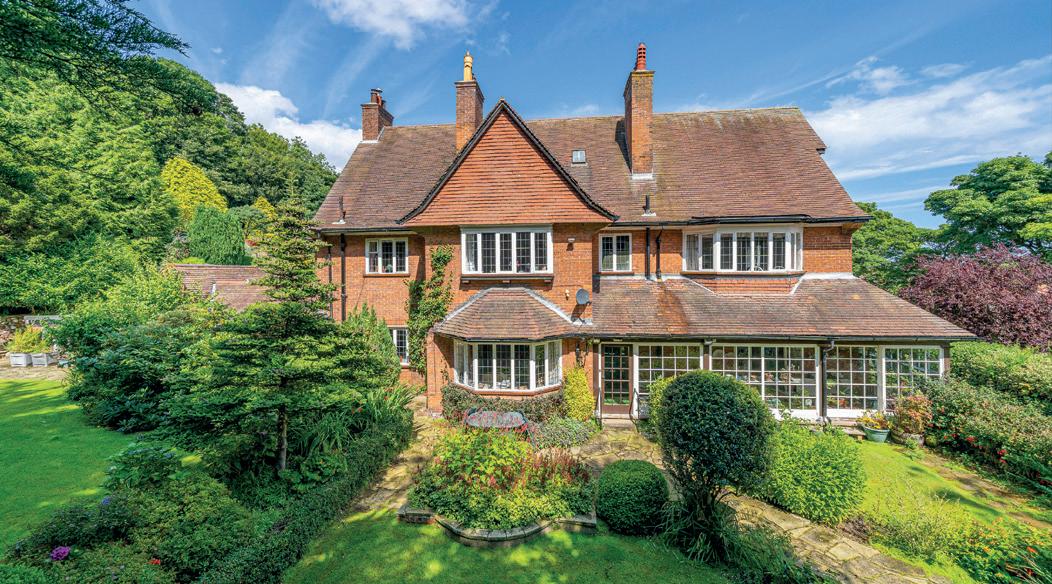

Country Market Comment
Fuelled by intense demand and squeezed by lockdowns and multiple, multi-level SDLT holiday deadlines, the last 18 months have seen much drama and not a little stress. Demand remains exceptionally strong but the end of higher SDLT relief has taken away some of the bottleneck pressure. The market is less frenetic, making it more attractive for the majority who require both a mortgage and a buyer for their existing home. This is important: during those ‘race to the Stamp Duty deadline’ days, the competition to buy quickly was so intense, many buyers with finance applications and dependent sales, were outpaced by those with cash. This prompted a spike in non-mortgaged purchases (according to Land Registry data) and the withdrawal of many ‘dependent sale properties’ from the market. This, in turn, exacerbated (if not outright created) a severe shortage of stock from which we are still recovering. Indeed, some owners who want to buy and sell, remain hesitant to enter the fray. Happily for them, the picture is now calmer and becoming progressively more so. Price pressures have reduced, as have fears that there might be a post-SDLT holiday fall in values, or that interest rates might rise. Prices are still rising, but not as sharply. Interest rates have, incredibly, moved even lower (at least for those eligible – see page 19). And, as stock levels return, it really does feel like a market in which there is a little room to breathe, survey the landscape and make a good move. So what has changed?
SELLERS HAVE THE UPPER HAND
There has been a switch in the balance of power between buyers and sellers, to the latter. Unlike the mortgaged-vs-cash buyers situation, this is likely to remain so for some time, but the extremes are behind us. Good buyers –especially in the upper price levels – are still prized, if less rare.
COUNTRY HOUSES ARE BACK
For at least a decade, we have reported on the wane in popularity of the kind of home on which our country houses business was largely founded: the rural five bed family house with an acre or two. Idyllic but impractical for households in which all breadwinners commute full time, such homes were passed over in favour
Below left: Oxfordshire £2,240,000 guide (Burford)


UK Market Review | N 0 . 48; 2021 4
0 50 100 150 200 250 300 350 EAST MIDLANDS EAST OF ENGLAND LONDON NORTH EAST NORTH WEST SOUTH EAST SOUTH WEST WALES WEST MIDLANDS YORKS & HUMBER 10 YEARS 20 YEARS
% CAPITAL GROWTH JAN 2001 AND JAN 2011 TO JUNE 2021
Right: West Sussex £1,550,000 guide (Chichester)
SOURCE: LAND REGISTRY / JACKSON-STOPS
of town houses close to an express train station. The ‘partial working from home’ phenomenon has changed this to a startling degree, boosting demand and prices. Just one example of this is a house on which our Northampton office agreed a £525,000 sale, only for it to be withdrawn because the owners couldn’t secure a place to
buy (see opening paragraph). Returning to the market nine months later, a sale was agreed at £576,000 – an annualised increase of 13%. High demand for rural houses is being perpetuated by the number of major employers now offering permanent contracts under which employees do not have to commute every day, or at peak hours. One result of this is that, for the first time ever, the majority of sales in excess of £1 million have been outside London (52%, JanMay 2021, Land Reg). WFH, is being baked-in.


SECOND HOMES ARE BACK
Both for those at the seaside and in remote rustic corners, demand for second homes over recent months has exceeded anything seen since extra SDLT on second homes was introduced in 2016. From April to the end of June 2021, 63% of all UK transactions attracted the 3% extra tax, double the normal proportion (buyers still had to pay the 3%, but not the standard tax). High

5 UK Market Review | N 0 . 48; 2021
Above & inset: Somerset £695,000 guide (Taunton)
Bottom: Cheshire £1,690,000 guide (Alderley Edge)
demand persists today, if not at quite such a phenomenal level.
WALES TOP FOR CAPITAL GAIN
The renaissance in the whole notion of country house ownership and lifestyles has been such that, to see prices grow faster outside London, is no surprise. More surprising, is that it is Wales which has had the highest growth over the last 20 years. But then, Wales started low (2001 average: £54,482); the picture is very different over the last ten years (see graph, page 4). What this really tells us is that, whilst London will always be more expensive and volatile (creating huge trough-to-peak differentials), over time, almost everywhere proves a good investment.
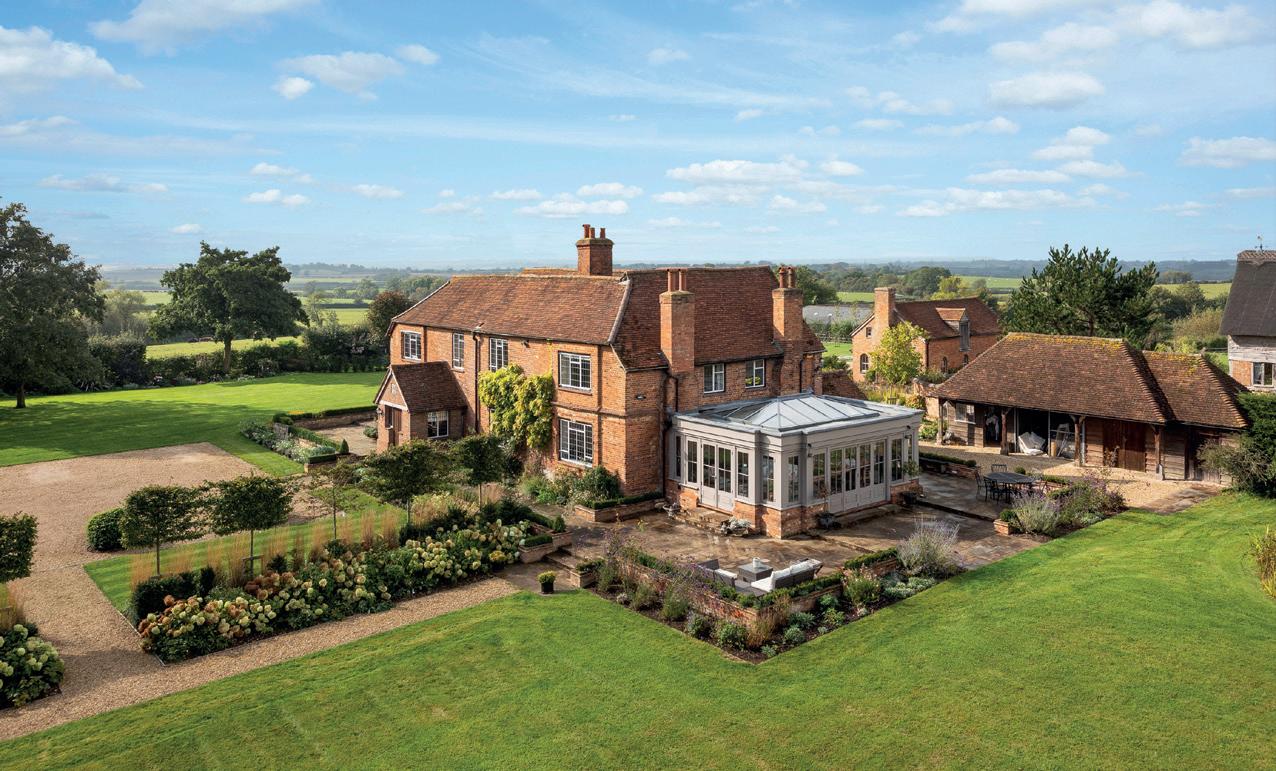


INTERNATIONALLY UNEXCEPTIONAL
Another trend which runs counter to received wisdom is that our market is typical amongst larger economies. All bar three OECD countries have, it reports, seen house prices rise since the start of the pandemic. Indeed, relative to 2011, UK price rises are below average; 23 countries have seen higher growth including the US and most of the EU (not France, inevitably). Our market is, relatively speaking, normal. In comparison to the preceding 18 months or so, it even feels quite normal at the moment – which makes it a good time to explore your options.
UK Market Review | N 0 . 48; 2021 6 Country Market Comment
Above: Suffolk £1,995,000 guide (Bury St Edmunds)
Left: Kent £850,000 guide (Cranbrook)
Below: Buckinghamshire £2,000,000 guide (Woburn)
RENTS RISE AS MOTIVES MOUNT
Outside the major conurbations, rents are universally higher. By how much, varies greatly.
Reports of markedly higher rents from our country house teams across the country initially seems at odds with the picture painted by statistics from the ONS. It tells of an average annual increase in rents of just 1.1% in England and 1.5% in Wales. Even its regional extremes were 2.4% (East and West Midlands) and minus 0.1% (London). Yet we have frequently seen rises of 8%, occasionally in excess of 10%, as more people are motivated to rent.
Historically, the country house rental market was almost non-existent outside areas favoured by visiting expats. From a small base, demand has grown at the lowest and highest price levels as mortgage credit restrictions and high stamp duty taxes, respectively, pushed potential buyers into renting. Over the last year and more, their numbers have been boosted by those wanting to work from home during lockdowns, a growth in demand for UK holidays (fuelling a sometimes divisive Airbnb market) and an additional tranche of people

excluded from buying by extra credit restrictions on, for example, the self-employed. Most of all though, country house rental demand has come from those who have sold their previous home and want to rent, whilst they look for somewhere to buy. This is now a regular feature of the market and, it must be said, does help in reducing the tensions which arise from long chains of dependent sales. In the face of such a swell in demand, available stock has, nevertheless, subsided, as higher taxes push a significant number of landlords to sell. Little wonder rents have gone up or, given the volatility of recent times, that the increases vary so much. But what of the ONS’s 2.4% or less? The answer is that, whilst our attention is drawn by the shiny light of new lettings agreed, ONS figures include all renewals, as well. These rarely achieve large increases (or decreases) and, often, are set at a rate fixed against inflation. The latest inflation rate at the time of writing? 2.4%.
Evening out: Because the ONS figures include renewals, as well as precedentsetting new lets, its figures are always less dramatic.
Source: Zoopla, HomeLet, Rightmove and Office for National Statistics – Index of Private Housing Rental Prices
7 UK Market Review | N 0 . 48; 2021 Country Rentals
Above: Kent £3,500pcm (Sevenoaks)
5% 4% 3% 2% 1% 0% -1% 6% RIGHTMOVE
ZOOPLA
HOMELET
-2% JUN 2013 JUN 2014 JUN 2015 JUN 2016 JUN 2017 JUN 2018 JUN 2019 JUN 2020 JUN 2021
(NEW LETS)
(NEW LETS)
RENTAL INDEX (NEW LETS) ONS/INDEX OF PRIVATE HOUSING RENTAL PRICES (NEW LETS & RENEWALS)
What will £1,000,000 buy in the country?
WHAT WILL £1,000,000 BUY IN THE COUNTRY?

Almost four times the current UK average house price of £266,000 (Land Registry), what a million pounds secures, varies across the country –though the differentials have been closing, of late.
This page, clockwise from the left: Devon £1,000,000 guide (Exeter)
Somerset £975,000 guide (Sherborne)
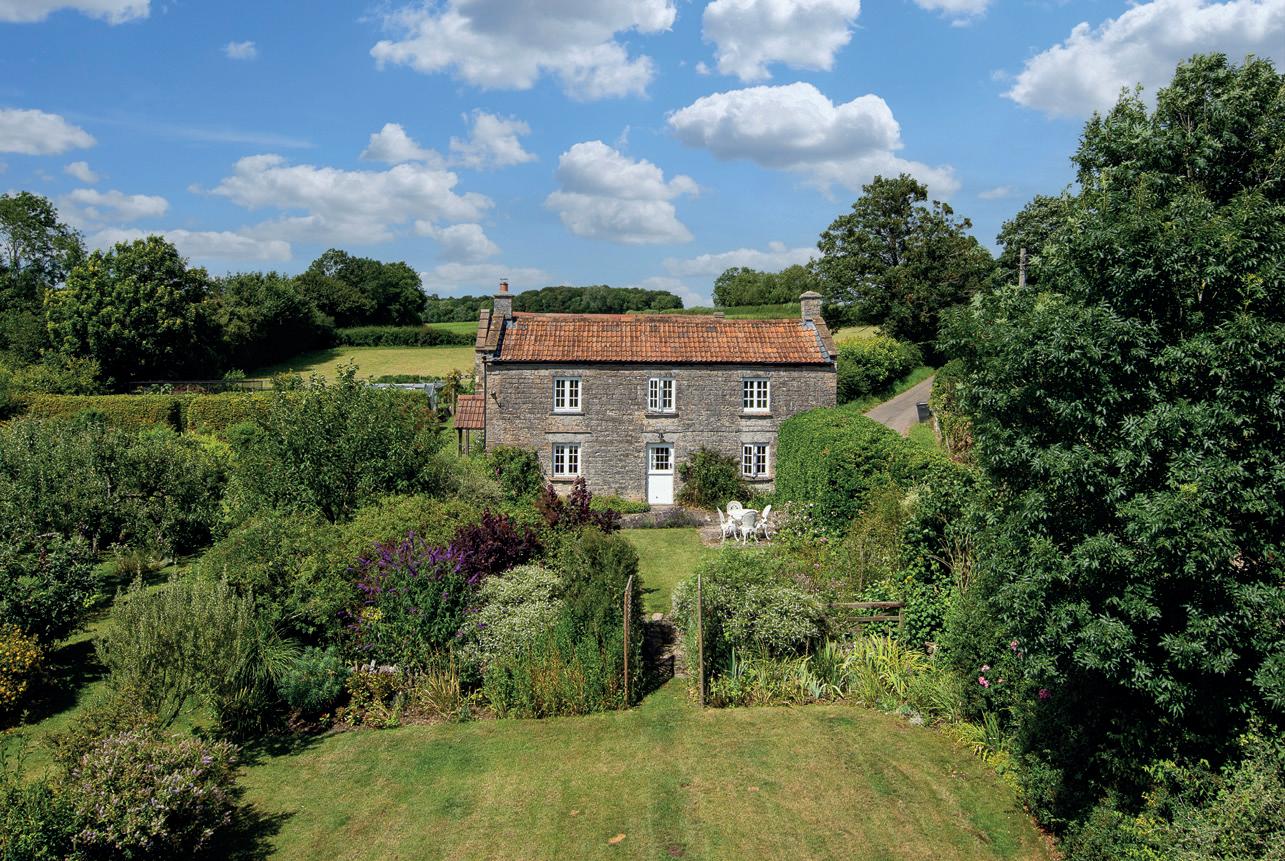
Kent £1,000,000 guide (Cranbrook)

Examples from our offices outside London


9 UK Market Review | N 0 . 48; 2021
This page, clockwise, from above: Gloucestershire £995,000 guide (Chipping Campden) Norfolk £900,000 guide (Norwich)

ENERGISING
A mass of unpredicted, often contradictory forces have combined to produce a market featuring more sales than almost any period since 2007, without overheating. With rents recovering fast and a renewed enthusiasm for city life, especially amongst the young, the market feels positively invigorating.
 Left: Bark Place W2 £10,833pcm (Holland Park)
Left: Bark Place W2 £10,833pcm (Holland Park)
The last 18 months or so have witnessed higher taxes and regulation for landlords, a brief if spectacular 35% fall in the FTSE 100, over 7,000 City jobs move to the continent*, the closure of London’s leisure economy and a flight to the country by residents seeking open spaces. More or less simultaneously, savings reached record levels, stamp duty was cut and thousands of what had been holiday let properties, came onto the rental market. More recently, the FTSE has largely recovered, City M&A activity has roared back to exceed 2019 volumes and mortgage rates have dropped to new lows. There are widespread reports of serious shortages of workers in several sectors and of serious profitability in others. The latter include the consultancy, legal, financial and tech businesses upon which so much of London’s prosperity depends.
Amidst this turmoil (and media focus on the booming country market), our London sales volumes so far this year have quietly doubled not their 2020 results, but their previous best results, ever. In part, this is growth in market share – but only part. A glance at combined
Land Registry records for Kensington & Chelsea and Westminster, shows 78% more sales in March 2021 (the most recent reliable figure at the time of writing) than the average for the previous five years. Put aside one tax-induced blip in 2016 and, across London as a whole, you have to go back to 2007 to see more sales in a single month. Furthermore, whilst there was a peak this spring, activity is more than picking up again, post-summer. This huge level of sales has generated less heat than might be expected: officially, London house price inflation is now 6.3% – lower than the rest of the country, but three times CPI. Our sales show that this average masks big differences, central London growth having been lower, leafier suburbs, higher. Even so, values everywhere are above expectations. Similarly, rents are back to where they were in many areas, our renewals are at an all-time high and average voids, less than 1%. Landlords are much happier than they expected to be. Those tenants who moved to larger or more central premises whilst rents were down, are even happier – and staying put for as long as they can.

UK Market Review | N 0 . 48; 2021 12
London Market Comment
Below: St Georges Hill KT13 £13,700,000 guide (Weybridge)
Right: Montague Road
TW10
£4,800,000 guide (Richmond)
Below: Sussex Street
SW1 £4,500,000 guide (Pimlico)


CORE DEMAND: YOUNG SHARERS
For work and social activity, the young are keenest to get back to city life. They want space to work from home as well though, so in Pimlico, for example, rents for typical two bedroom flats are back to their pre-pandemic £460 to £525 per week. Sales values there, too, are little changed. Today, whether looking at Westminster, Wimbledon or Weybridge, the pressure on prices is upward.
A POSITIVE MARKET
The first half of 2021 has seen an extremely active lettings market in Central London with a noticeable resurgence of international relocators plus students returning in vast numbers. Pent up demand is the reason behind much of this accelerated activity and it is creating a shortage
of supply in the market. This competition is pushing prices back up to pre-pandemic levels with lettings values predicted to continue to rise as we head towards the end of the year. The lack of supply is encouraging long term tenancies with many tenants who are well looked after, deciding to remain in current properties rather than move anywhere else.
IMPROVED AFFORDABILITY
Lower mortgage rates, with higher deposit monies and salaries, are boosting buying power. Add in relatively unchanged prices and, if anything, it is surprising that demand is not growing even faster. We therefore expect the current sales market, characterised by exceptional volumes and accelerating growth, to continue. In the lettings market, rental demand is growing as employees return to the office, whilst supply is down. Significant increases in rent, seem likely. All growth continues to be driven now by demand not from older, overseas investors and second home buyers, but from younger, UK based owner-occupiers and tenants. It is a strikingly balanced, energising environment.
*7,400 EY May 2021
13 UK Market Review | N 0 . 48; 2021
London Market Comment
AT HOME WITH SUSIE WATSON
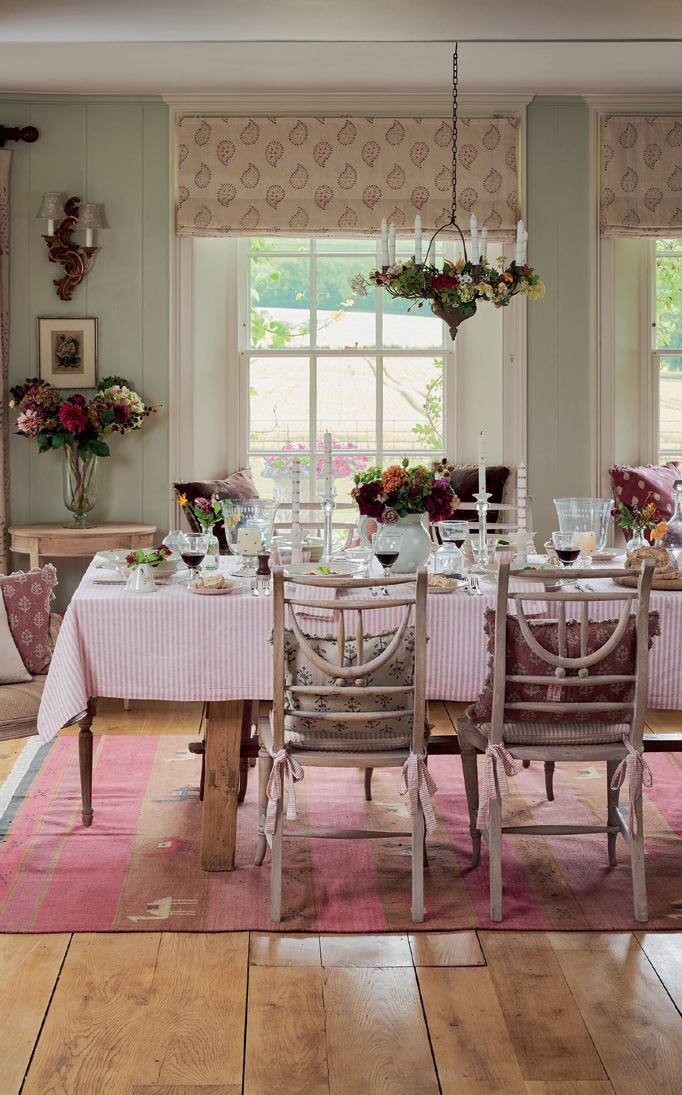
With premises in many of the same areas as Jackson-Stops, Susie Watson Designs also shares our commitment to the physical high street, to country styles and exceptional quality, coupled with the most modern and convenient ways of working.

As part of a new partnership with Susie Watson Designs, we have exclusive offers available to Jackson-Stops clients. Please ask for details at any of our offices.
BEGINNINGS
These last two years have been profoundly affecting in so many ways, but one of the unexpected positives has been living a little more slowly; taking one day at a time and enjoying the little things as much as possible. When life gets busy, this philosophy of everyday living is so often overlooked. I have a deep commitment to our English way of life, which has family at its heart. It is about making time for children and animals, as well as sharing in the enjoyment of the English countryside – and our homes are where all these things can come together.
FAMILY MATTERS
When I started this business, over twenty years ago, ours was a noisy, busy home filled with children and dogs and
quite a lot of mess! I suppose it’s still like that now, except that the children are now grandchildren and there are more dogs – so my focus has always been about how to make a home that is warm and welcoming but informal enough to withstand the rigours of everyday life at home.
THREE WORDS ON COLOUR
If anything has guided me in creating my collections it is colour. Colour is an integral part of the way we experience the world around us. Colour is also emotion. It has real power to transform mood and outlook. Interior Design is about discovering the colours you are drawn to and then finding ways to introduce them into your home. In this sense, I always think it is a shame that so many people choose to outsource
UK Market Review | N 0 . 48; 2021 14
this work to other people. Half the fun is in finding out what you love. It can be quite daunting to begin with –the choice is overwhelming – which is why all my shops have Interior Design teams, to guide and provide free advice, to help customers discover their own sense of style.


A CRUSADE FOR HAND-MADE
I am very passionate about handmade things. Mass-produced items
may be cheaper and yet it seems crazy to compare them to their hand-made counterparts. Making by hand celebrates craftsmanship over consumerism; it sustains communities, culture and creativity. I believe that we have all become so accustomed to machine-made products, that we forget to appreciate the effort, time and skill involved in making something by hand.
ART FOR EVERY DAY
Whether in the UK or further afield, our manufacturers are all family run businesses and our products are handmade from start to finish. For example, I love that our artisans sign their works (where possible). It gives me so much pleasure to see those initials on the bottom of the mug when I have my morning coffee – because it connects them to their work but also to allow
me to connect with them. I really believe that Art represents a way for people to come together and share an aesthetic experience, even if they live on opposite sides of the world.
www.susiewatsondesigns.co.uk
VISIT A SHOWROOM:
Alresford | Chichester
Harrogate | Knutsford
Marlborough | Marlow
Saffron Walden | Salcombe
Sherborne | Tunbridge Wells
15 UK Market Review | N 0 . 48; 2021


New Homes & Developments
BARN RAISING
A planning-led boom in barn conversions has coincided with a fashion for new buildings which mirror their grand proportions.
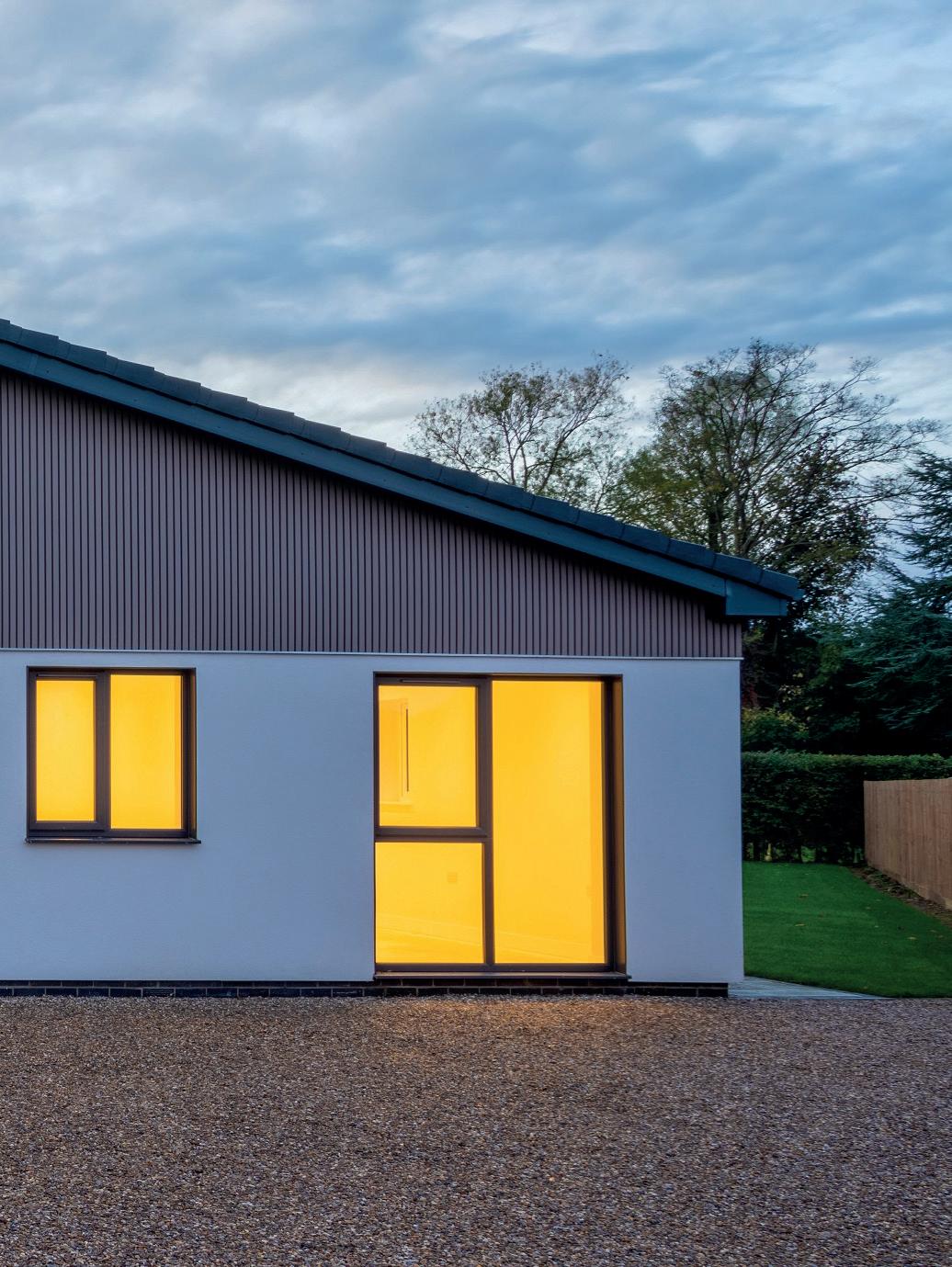

Top: Essex, £895,000 guide; conversion (Chelmsford)
Bottom: Suffolk, £660,000 guide; new build (Ipswich)
17
Since 2014, planning permission has not been needed to convert most agricultural barns built before April 2013, into homes. According to the Local Government Association, this change led to a three-fold increase in such conversions, to around 750 per year. Figures for the last year will, we suspect, prove much higher. Simultaneously, demand has sprung up for brand new houses which share features of the more modern barn conversions, to the point at which one wonders which came first: the mimic or the convert?
What is the appeal of the conversions of late 20th century barns and the newly designed houses which appear to have been influenced by them? Planning expert and Jackson-Stops Northampton Director Ian Denton, is clear: the appeal is space – inside, outside and beyond.

“ Few buildings have such enormous rooms, with their high ceilings and big windows, or the open countryside around them. Barn conversions often have large gardens, too. The contrast with confined, congested city living, is complete. ”

Eased planning rules have proved a boon for farmers – many of whom have not prospered in recent years – and created new homes without new buildings or more visible mass, with less embedded carbon. They are popular with
families, bringing fresh life to rural areas. They typically look much better, too, kerb appeal not being a priority of concreted farmyards designed for large agricultural vehicles. Does ‘no planning permission required’ mean farmers can do what they like? Hardly. As Ian Denton explains, owners need prior consent from planning authorities: “ Consent in only given if the barn is not in a protected zone, such as a Conservation Area or AONB, and if new minimum standards are met for room sizes and natural light. ” Coupled with building regulations and other rules on, for example, infrastructure, this means that owners of agricultural (Class Q) buildings who want to convert, have a far from free hand. What they usually do have, is a clear path to move from concept to conversion at much greater speed and lower cost. Given this, and the continued ‘race for space’ instigated by flexible working, we expect the supply of new barn conversions – and similarly roomy brand new homes – to continue.
Above: Bedfordshire £1,399,000 guide; conversion (Woburn)
Below left: Devon excess £625,000; new build (Barnstaple)

Below right: Devon excess £500,000; pre-conversion price (Exeter)
Opposite page: Top: Sutherland St SW1, one bed flat with 52 years remaining, £400,000 (Pimlico)
Bottom: Cheshire, 3.4 to 19.2 acres, from excess £160,000 (Alderley Edge)

18
UK Market Review | N 0 . 48; 2021
LEASES PROTECT LEASEHOLDERS
Almost all flats are leasehold: it is a solid, long-trusted form of legal ownership. Even so, bad press around ground rents has prompted a sharp increase in enquiries about lease length and shared freeholds. These are understandable, but two points are worth bearing in mind. Firstly, after two years, owners usually have the right to extend the lease by 90 years at a legally-determined, fair price. For the London flat below, for example, it should be no more than £75,000. Secondly, a good lease protects owners in ways that freeholds cannot, defining rights, considerate behaviour between leaseholders and precisely what you are buying. The important thing, is to read it.
HEADLINE RATES HIDE WIDER WINS
Sub -1% mortgages don't just look too good to be true. As many have been quick to point out, they are – at least for all bar the super-prime borrowers to whom the difference, will make little difference. Only with a 40%+ deposit and a solid income of around 25% of the loan or more, will the best rates be readily available to you. Even then, lenders often want a £1,500 arrangement fee: below £300,000, you might be better off with a higher rate package. Behind the headlines there is good news for the less well-heeled majority, too, though, because the low rates they highlight affect rates and terms, across the spectrum. They are part of a reinvigorated competitiveness, as lenders adjust to higher confidence in underlying values and fight for market share. Thus, for example, 90% LTV loans – which, at the start of the year, were all over 3% – have moved down, at the time of writing, to 2.05% (Skipton). Hurdles for the self-employed, raised painfully high during the lockdowns, are being lowered, if slowly.
WHY RENTERS STILL RARELY BUY
FARM SUBSIDY RULES: 5 HECTARE MINIMUM
We have seen a large increase in enquiries about smallholdings and houses with land, along with hopes that the new Environmental Land Management subsidy scheme (which will replace EU direct farm payments) might make ‘Good Life’ dreams, viable. At present, though, despite accounting for 15% of those in England alone, commercial farms under 5 ha (12.36 acres) will not qualify, nor will land that is not already being subsidised. Indications of the value of payments also vary so wildly as to be of no help. Best, if you can, to secure the 5 ha minimum, make your plans work without subsidy – and hope for some icing on the cake.

Deposit and rates continue to dominate. A higher earning London SW1 couple renting a £750,000 flat at around £2,000 a month, could buy it – if they had £150,000 to put down. But at 90% LTV, instead of 80%, their best rate would rise from 1.58% to 2.13%. The same £2,000 per month, over the same 30 year term, would secure £51,000 less and their maximum purchase price, with a £61,000 deposit, would be £610,000 – with two secure incomes totalling at least £120,000. At lower earnings and prices, the same story, which is a tough one for first time buyers especially, plays out. In the mid-nineties, average house prices were around 4.5 times average earnings. Now, that ratio is just under nine (Deloitte / ONS). For this to reverse, enough of the many factors which have underpinned capital values for 30 years – such as low inflation, high immigration, housing shortages, low wage growth and generally benign fiscal policy – will need to change.
For independent advice, contact Private Finance on 0870 600 1650 or jackson-stops@privatefinance.co.uk.

Private Finance
www.privatefinance.co.uk
Technical queries
SUBSTITUTE FOR THE ONE TRUE CITY
by Janan Ganesh

My country of birth is not the same as my country of citizenship, which is not the same as my country of residence, which is not the same as my country of ancestry. I could substitute “country” for “continent” throughout that sentence. The perversity of London is that it is somehow, unambiguously, home. And I mean all of it. Not just the blue-plaque core or Betjeman’s Metro-land but that world of interwar housing and parks called simply Recreation Ground in between: so unsung as to lack a name. It is Colindale and Croydon and Greenford and Ilford. In the most documented city since Rome, I am forced to call it Zone 4. I am a product of it, if also an unrecallable fugitive from it. It is easier to say what it isn’t: neither metropolis nor suburbia, neither fish nor fowl. But if you know, you know, and millions do.
As an expat, neither that ambiguous terrain nor the more vaunted quarters have been mine for years. I accept that the exiled Londoner is doomed to hunt for substitutes for the One True City. Everyone is entitled to their “other” home. New York (for the legal-financial bent) and Paris (for the proximity) are London’s obvious sisters. By dint of biography, Lagos
and Singapore should be my reference points.
So why, for a fix of home, do I increasingly reach five and a half thousand miles west to the alien climes of southern California? If Los Angeles is London-ish, it is, I think, because it makes no sense. There is no structure to the layout. There is no architectural pattern. The ethnic mix is too protean to keep up with. The politics, such as it is, is a dog’s breakfast of competing authorities. A vast web of villages hangs together with no stronger an adhesive than spirit.
I walk a mile of deadening banality on Melrose and hit the miracle of design that is the Danziger Studio. It is as jarring as the turn from the laundrettes of Chalk Farm into chocolate-box Primrose Hill. And while London has had 2,000 years to accumulate these layers of complexity, as densely packed as sediment, LA has had 200. Home is understood to mean the place you know best. What draws me to London and LA is precisely their unknowability. These are siblings who don’t quite know it. If either place starts to make sense, I will need a new home.
ukmarketreview.co.uk | jackson-stops.co.uk | Edited and produced by RealBranding.Agency SALES | LETTINGS
NEW HOMES West Country Barnstaple 01271 325153 Blandford 01258 433002 Bridport/Dorchester 01308 423133 Exeter 01392 214222 Shaftesbury 01747 850858 Sherborne 01935 810141 Taunton 01823 325144 Truro 01872 261160 Yorkshire York 01904 625033 Harrogate 01904 625033 Thirsk 01904 625033 London Holland Park 020 7313 3600 Mayfair 020 7664 6644 Pimlico 020 7828 4050 Richmond 020 8940 6789 Teddington 020 8943 9777 Weybridge 01932 821160 Wimbledon 020 8879 0099 Central Northampton 01604 632991 Woburn 01525 290641 Country Houses 020 7664 6646 New Homes 020 7664 6649 South East Canterbury 01227 781600 Chichester 01243 786316 Arundel 01903 885886 Emsworth 01243 370300 Cranbrook 01580 720000 Dorking 01306 887560 Midhurst 01730 812357 Mid Sussex 01444 484400 Oxted 01883 712375 Reigate 01737 222027 Sevenoaks 01732 740600 Tunbridge Wells 01892 521700 Winchester 01962 844299 Woking 01483 322135 East Anglia Burnham Market 01328 801333 Bury St Edmunds 01284 700535 Chelmsford 01245 806101 Ipswich 01473 218218 Newmarket 01638 662231 Norwich 01603 612 333 North West & North Wales Alderley Edge 01625 540340 Chester 01244 328361 Hale 0161 9288 881 Cotswolds, Hereford & Worcs Burford 01993 822661 Chipping Campden 01386 840224
|
PROPERTY EXPERTS SINCE 1910
Janan Ganesh is Chief US Political Commentator and associate editor for the FT. Previously political correspondent for The Economist, his books include the biography ‘George Osborne: The Austerity Chancellor’.
Home




















 Left: Bark Place W2 £10,833pcm (Holland Park)
Left: Bark Place W2 £10,833pcm (Holland Park)

















